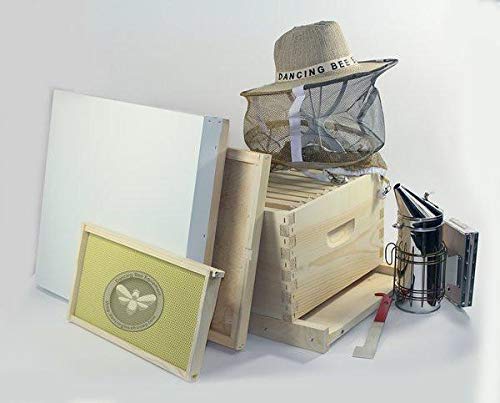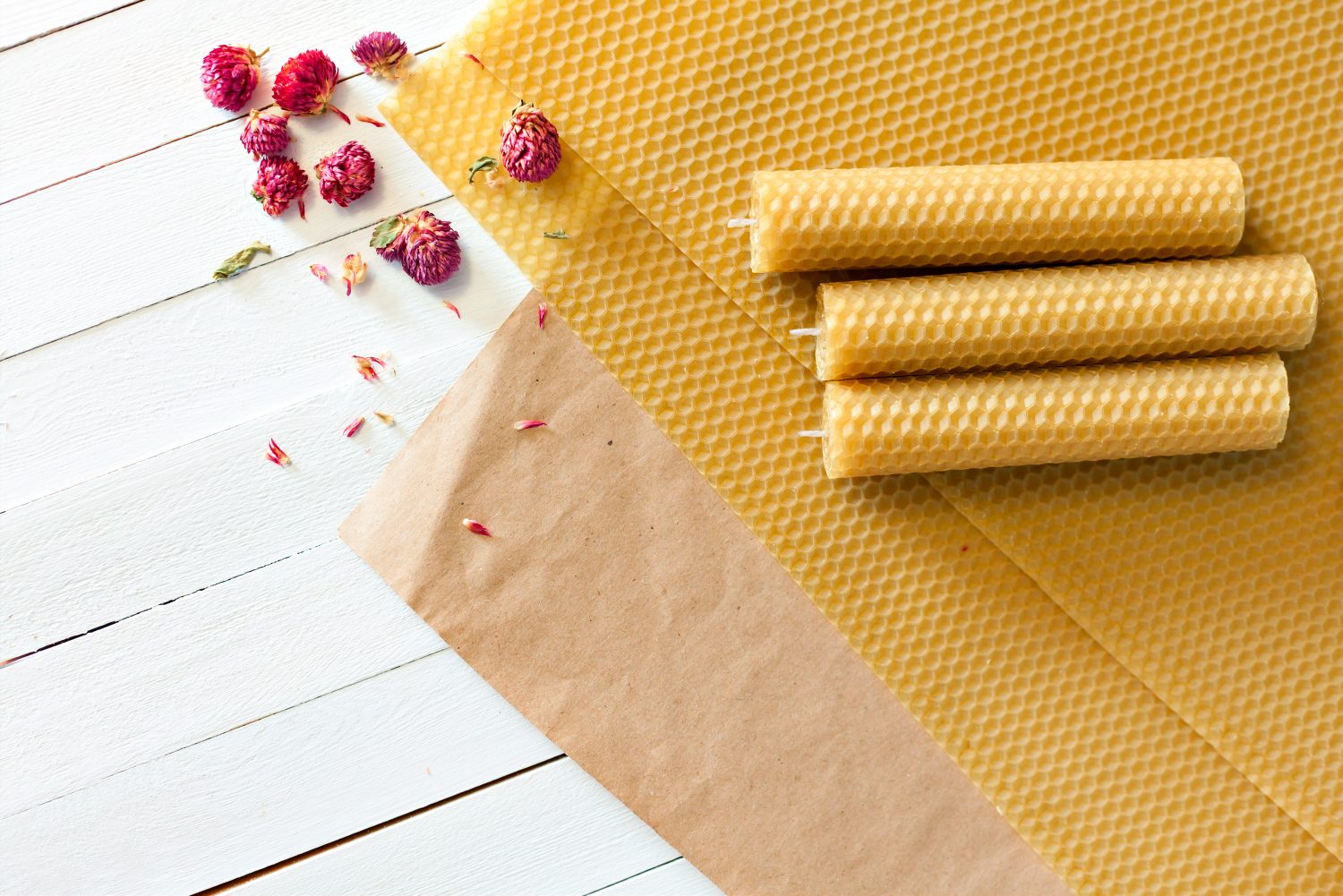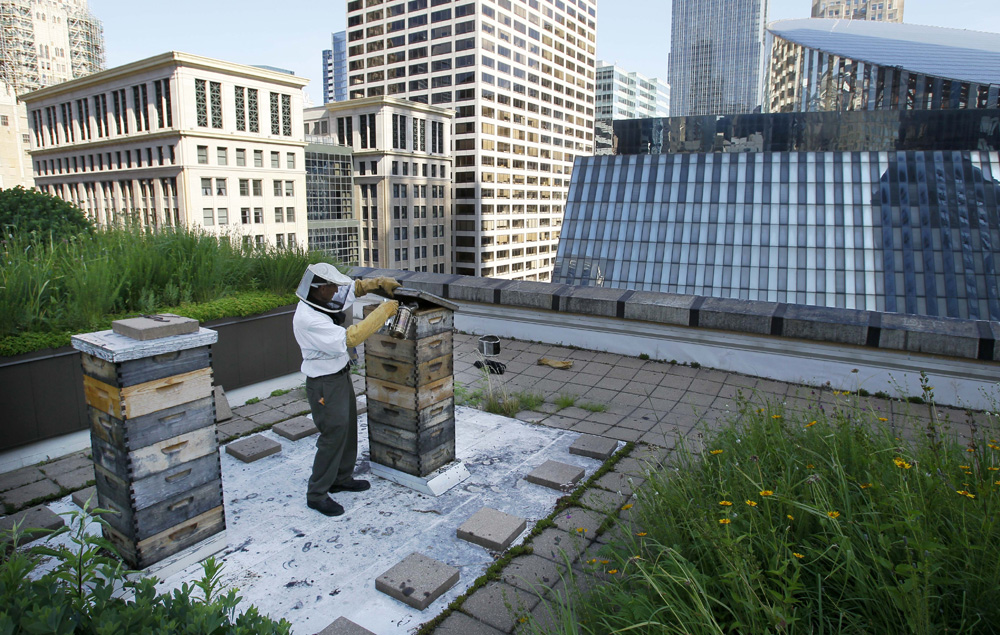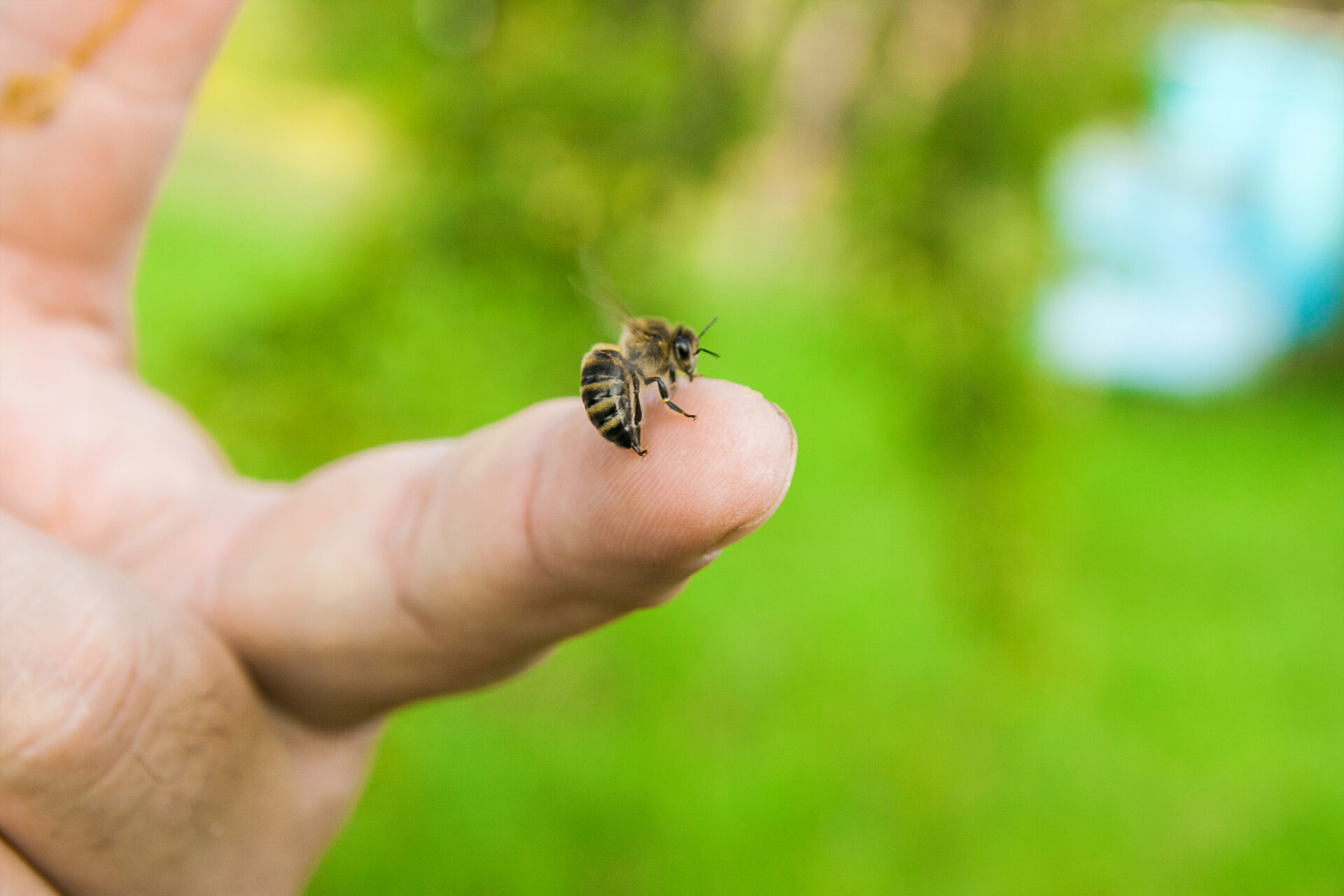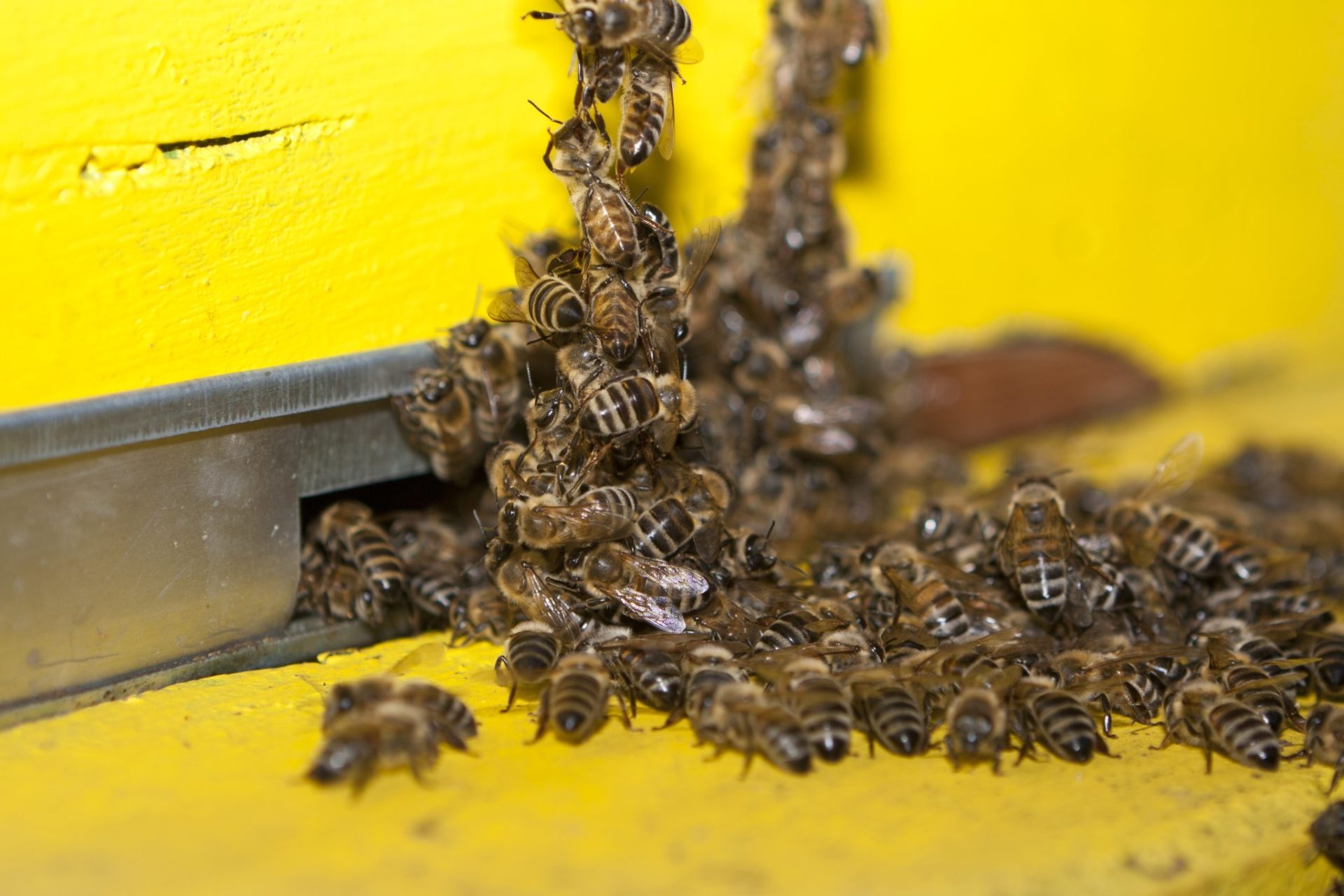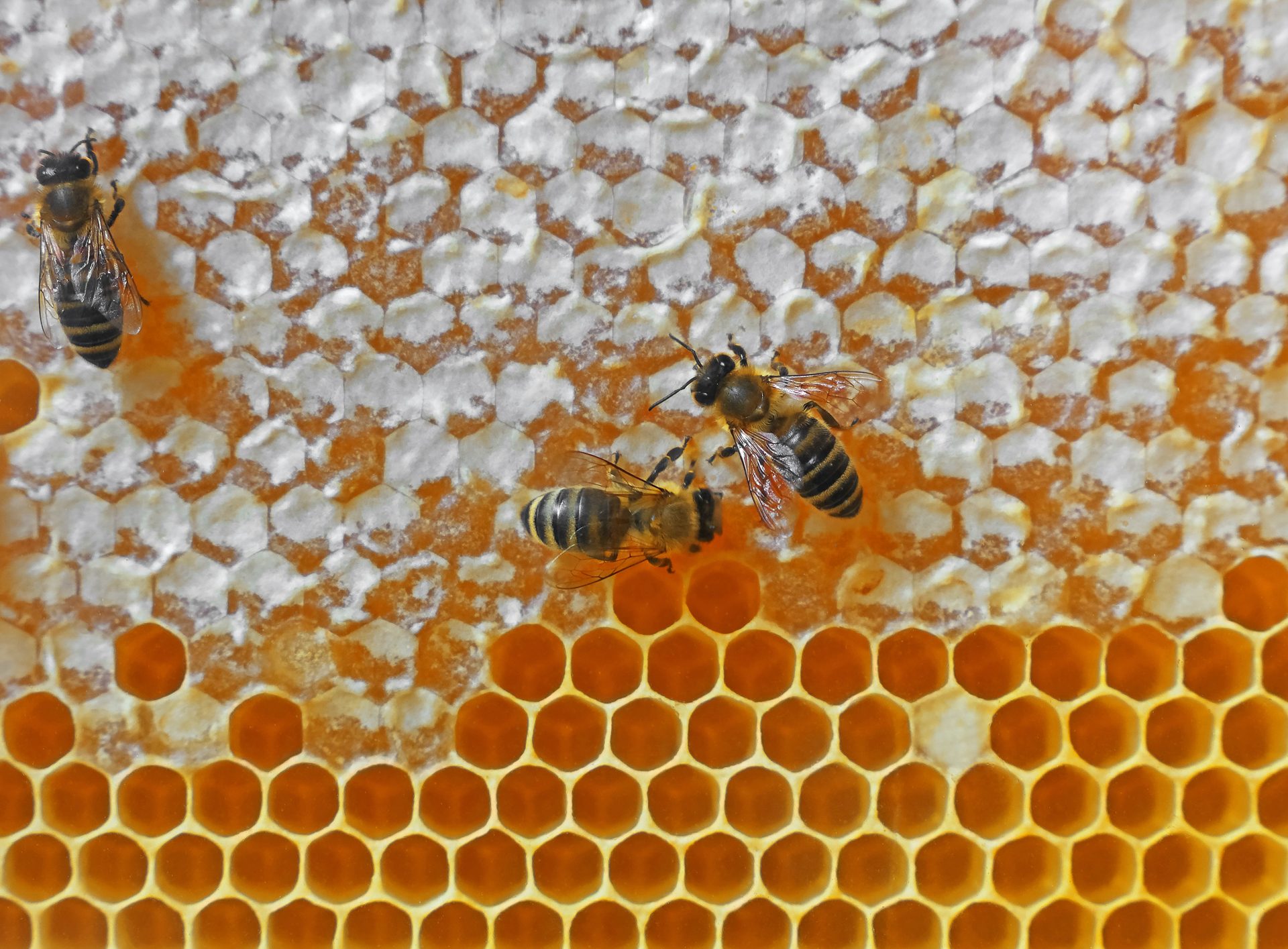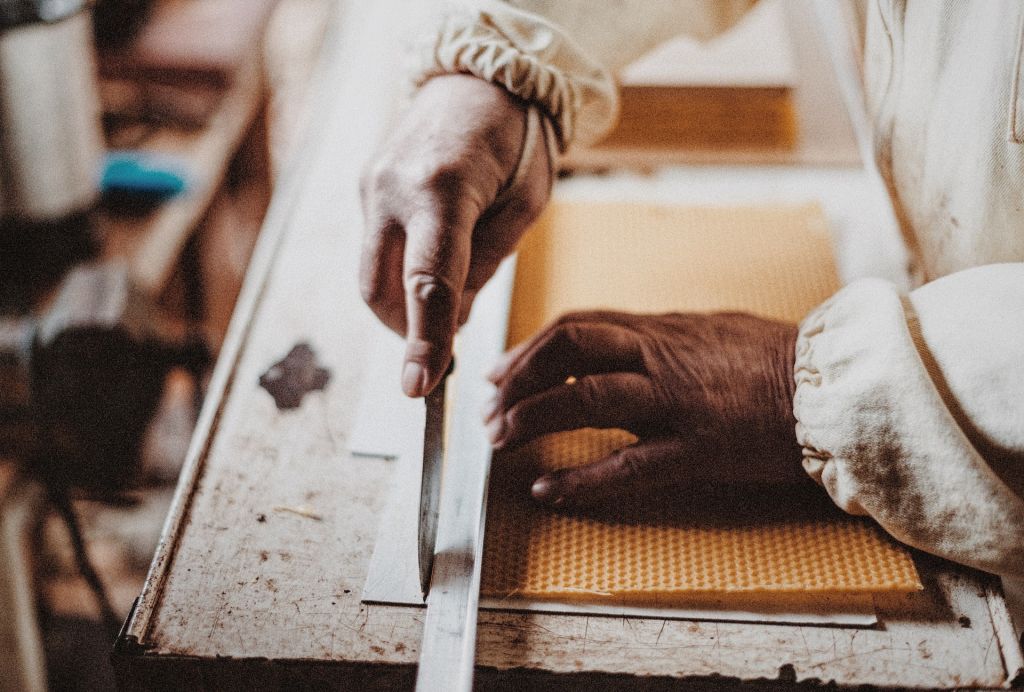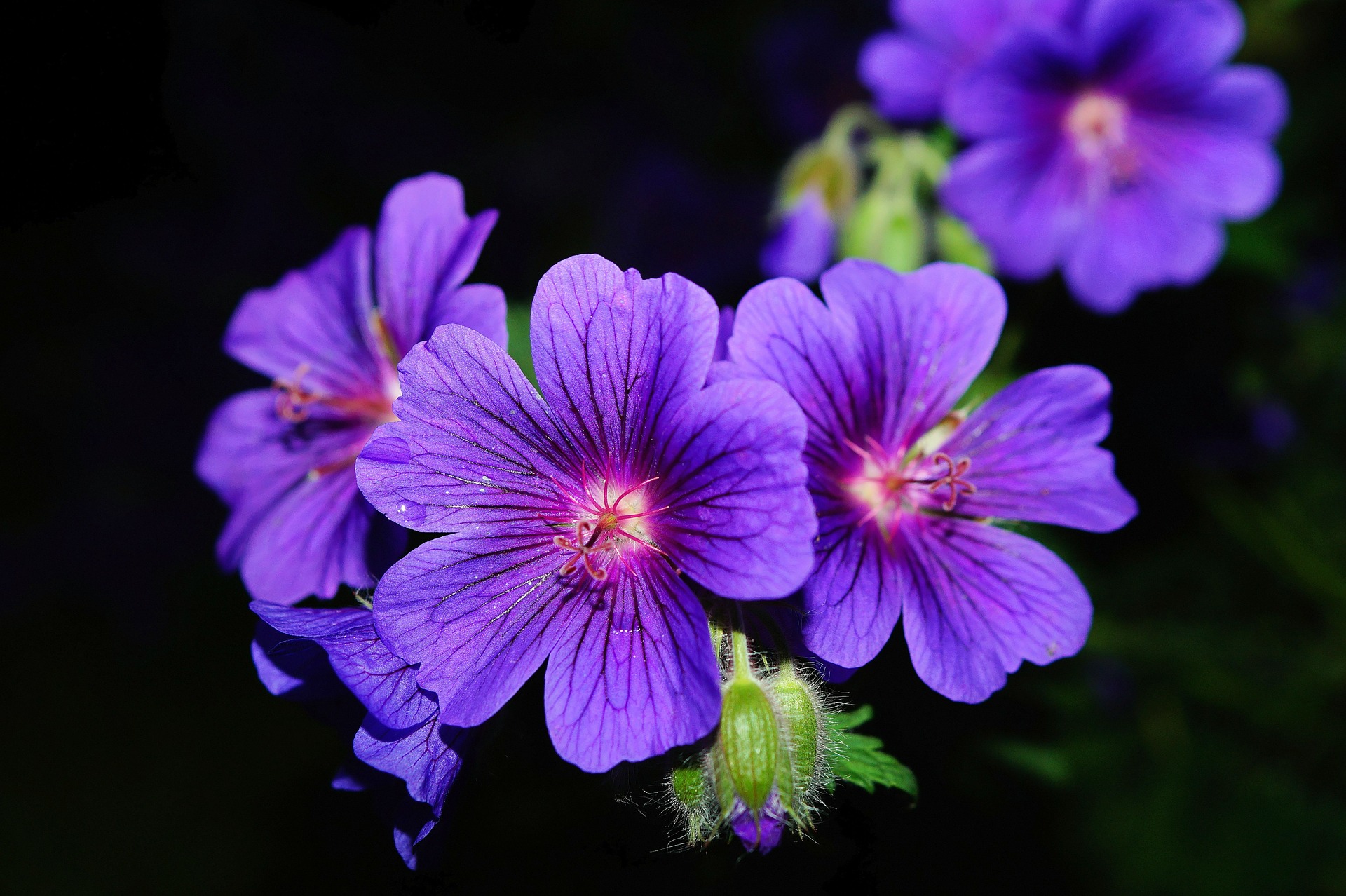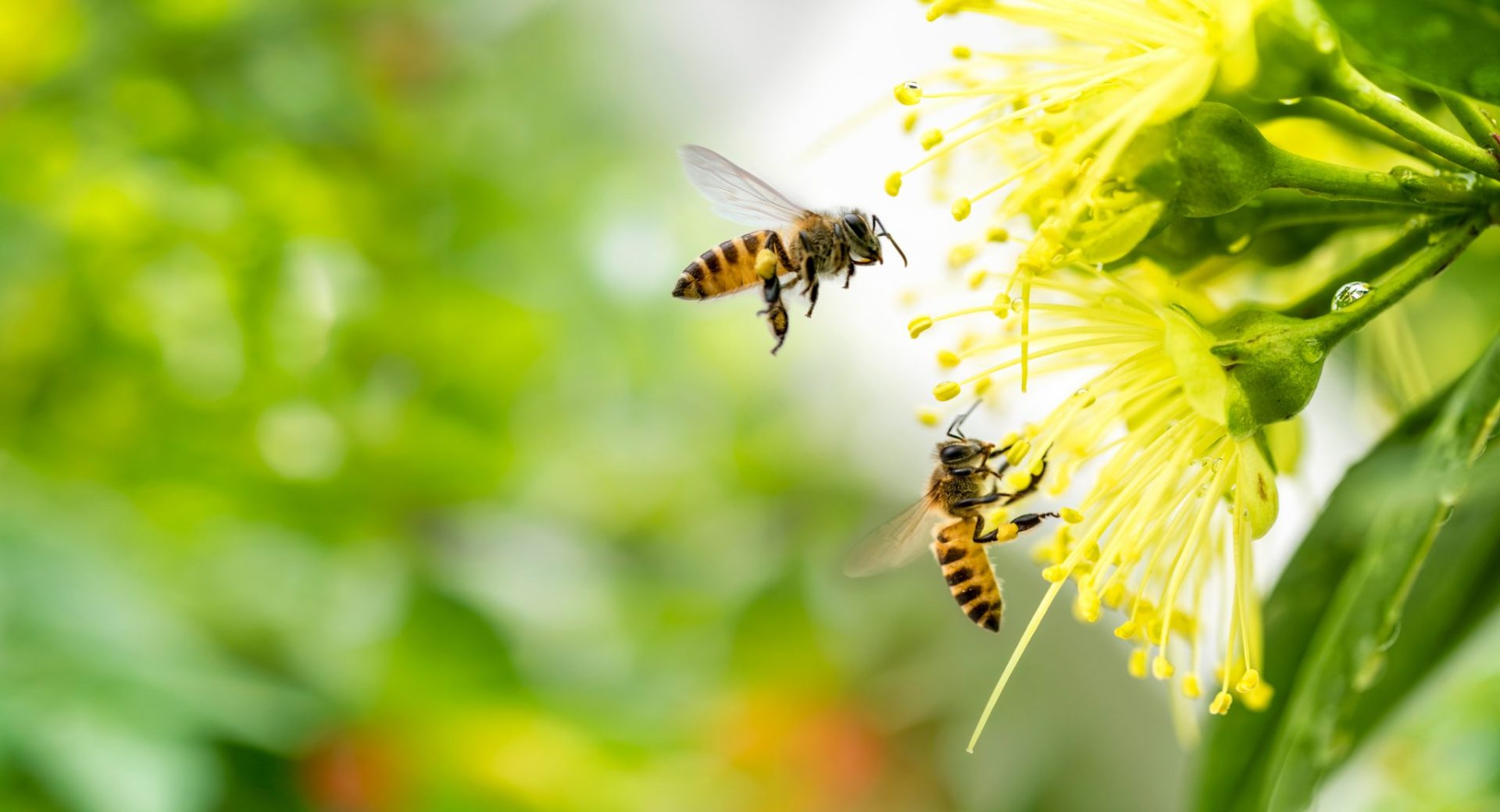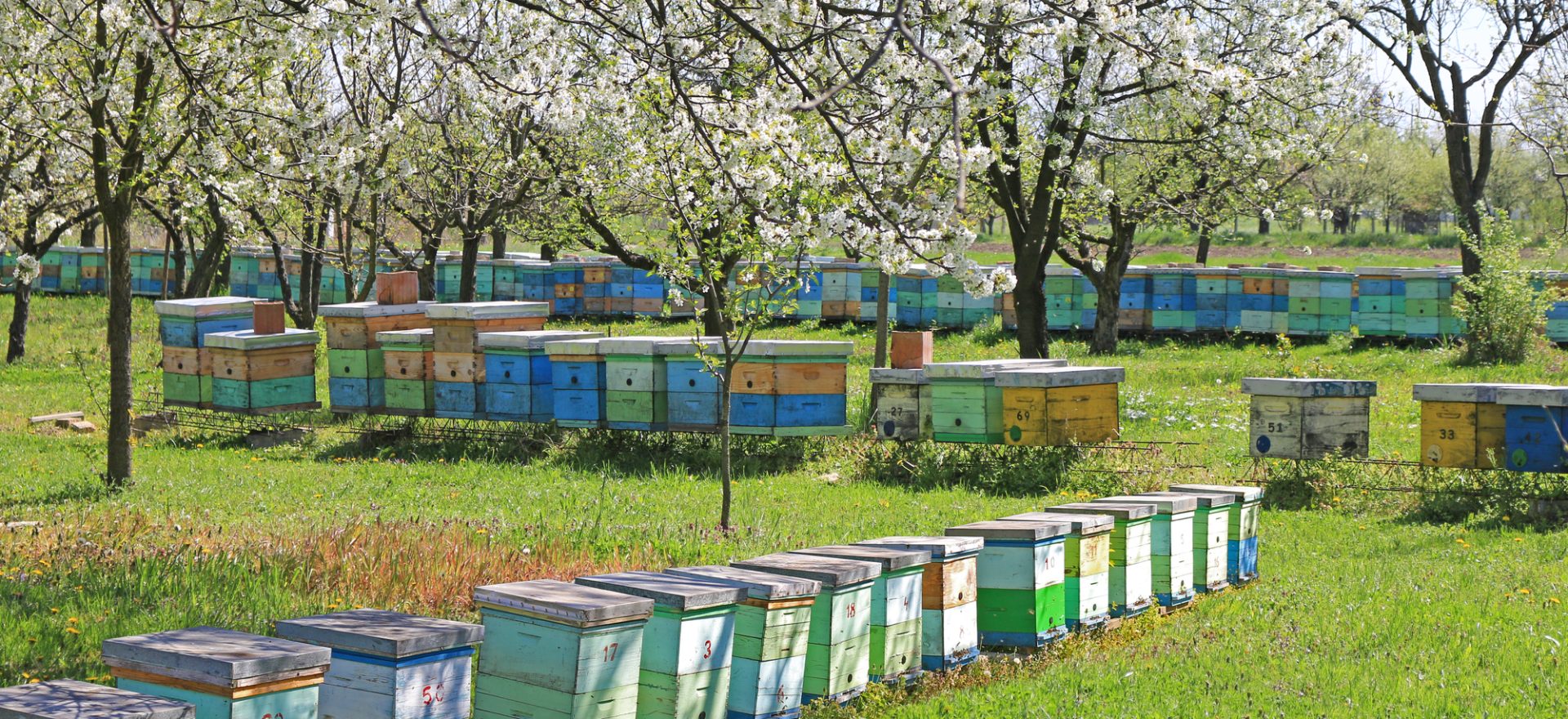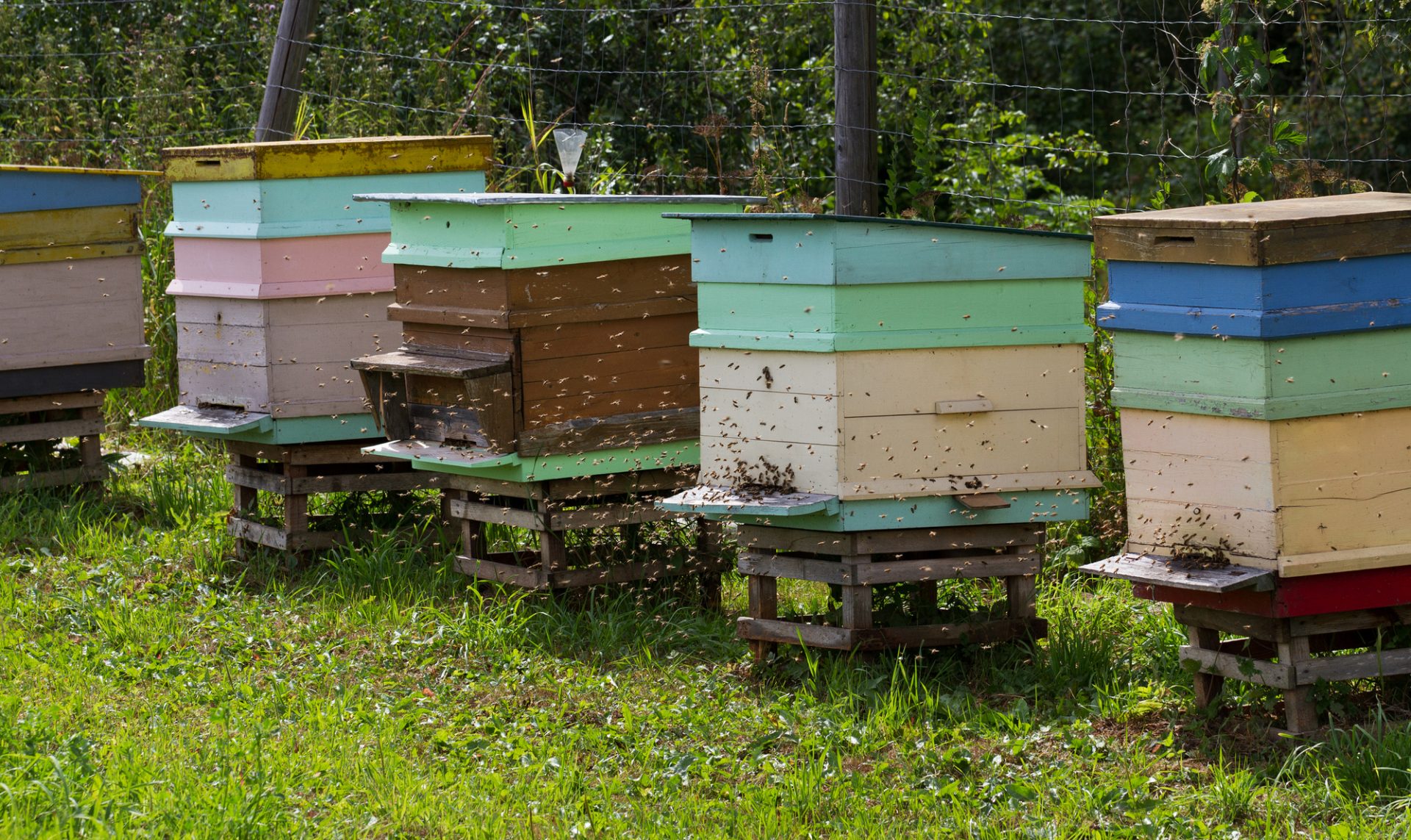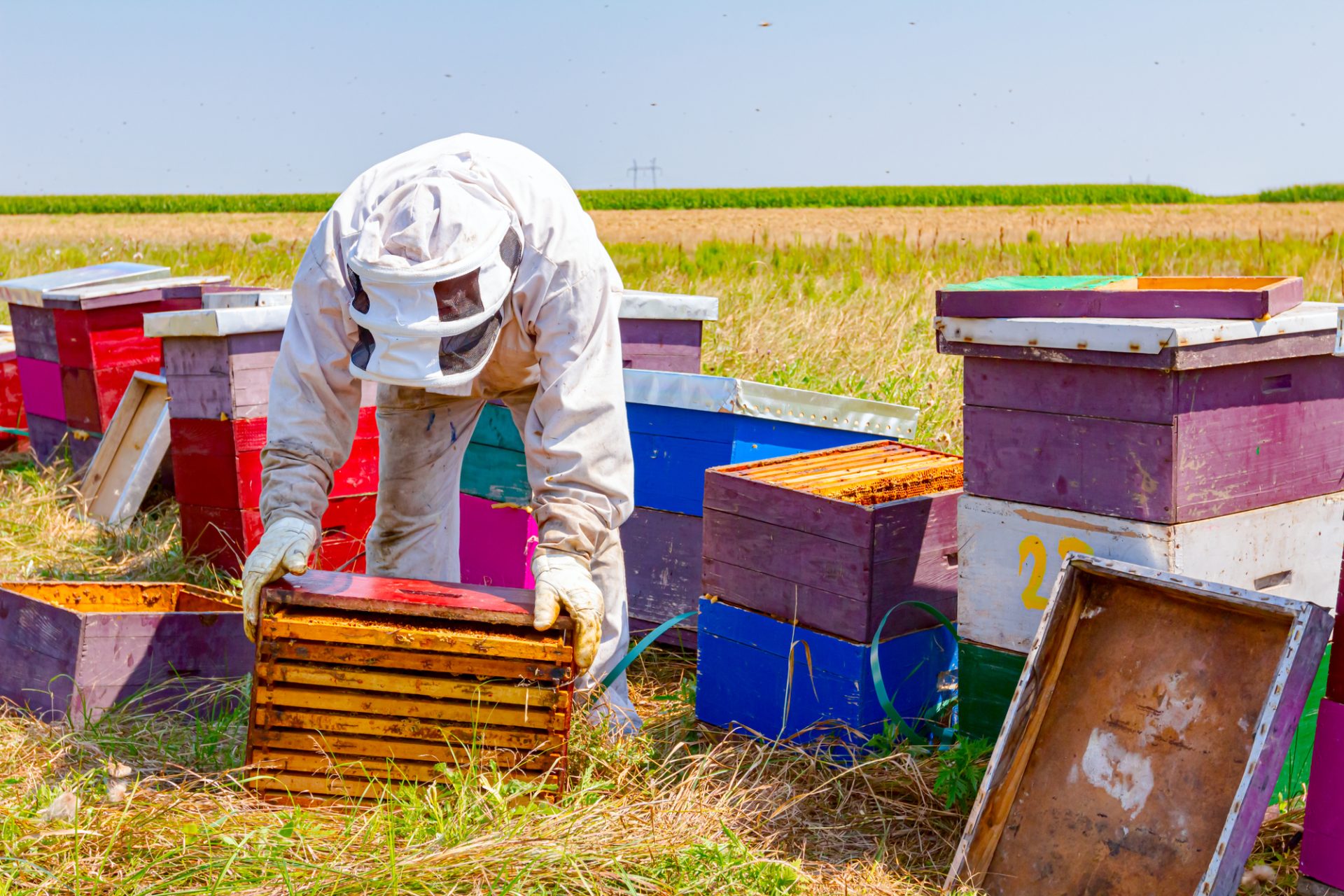If you purchase an independently reviewed item through our site, we earn an affiliate commission. Read our affiliate disclosure.
Beekeeping is one of the oldest practices that humans started, dating about 10,000 years ago. Early Egyptian temples featured some art that demonstrated that bees were kept during those ancient years. Presently, beekeeping is a hugely profitable enterprise, practiced all over the world, except for extremely cold regions such as Antarctica. If you are a beekeeping enthusiast or simply want to learn all about keeping bees, then the below frequently asked questions about beekeeping can be helpful.
Frequently Asked Questions About Beekeeping
Question 1 – What do I Need to Get Started in Beekeeping?
For starters, beekeeping might seem far-fetched. However, that is never the case, considering what is required. First off, you will need to find a local beekeeping community since this is the easiest way to acquire the required in-person tips and insights about the business of keeping bees. You should also consider enrolling for a beginner course. This can be done online or onsite facilitated by local beekeepers. A course will allow you to understand what is happening within the locality.
Once armed with the knowledge of raising bees you can then find a place to keep them. Some of the options to consider include rooftop, backyard, garden, farmland, or a local apiary. After the location is determined you can then buy the beekeeping equipment such as the hive, and safety gear such as a bee suit, boots, and gloves. Other requirements include the bee smoker, the hive tool, a bee feeder, and of course the bees.
In addition to the beekeeping equipment, you need to consider if you have the required time to inspect the beehives. On average, you will require 30 minutes a week to check a single hive. Two or more hives will require more time for inspection and regular maintenance. With all that considered and the necessary equipment in place, you can then obtain your bees and begin.
Question 2 – What Products do Honeybees Make?
Honeybees are known for honey, yet they do make many other products. Some of these products and their uses include the following:
- Beeswax – made from the abdominal glands of young worker bees. Beeswax is used for making candles, conditioners, lip balms, polishes, creams, and many other products.
- Pollen – collected using the pollen basket that worker bees have. The product is taken by humans as a health supplement.
- Bee bread – a mixture of nectar, pollen, and bee digestive fluids. Made by the bees and stored in the hive. Bee bread is taken as a health supplement by humans.
- Propolis – made from resins, tree saps, and balsams. Used by honeybees to keep off harmful pathogens. Also used for sealing cracks in the hive. Humans use propolis as a health supplement and in cosmetics.
- Royal jelly – a product secreted by adult worker bees and is used for feeding larvae. The future queen is fed solely on royal jelly since it is highly nutritious.
- Bee venom – this is the transparent liquid produced by the stinger of a worker bee. Bee venom is harvested and used in alternative medicine for treating various diseases.
- Bee air – popularly used in apitherapy. It is the air produced by honeybees inside the hive. Humans have found ingenious ways of harvesting it and using it to cure some diseases through what is known as apitherapy.
Question 3 – Are Honeybees Harmful to Humans and Pets?
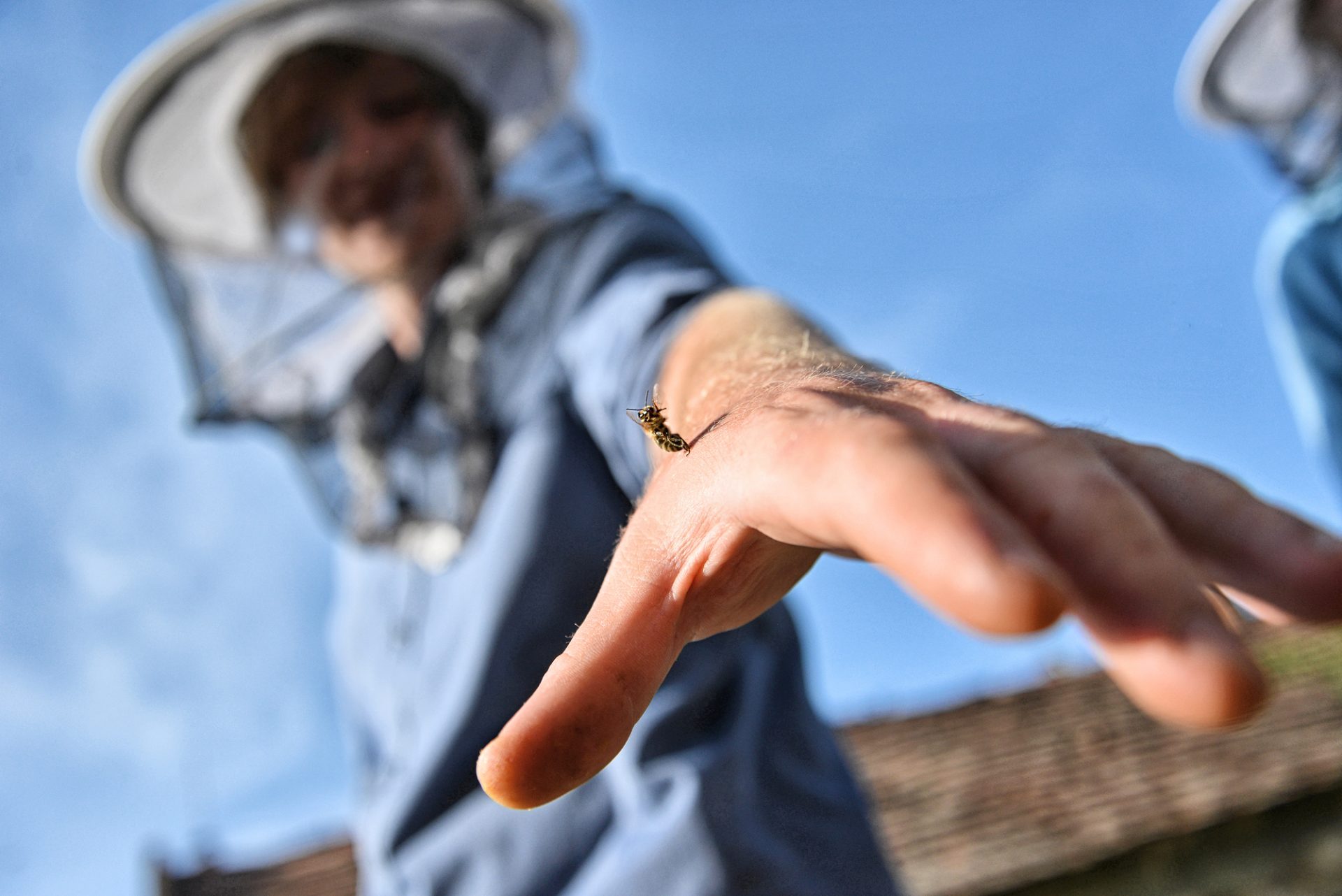
Yes. Honeybees are considered dangerous and a sting from one can lead to a painful and swollen area. Some people are allergic to bee venom and will require medical intervention when stung. Surprisingly, honeybees are mostly peaceful insects that will only respond aggressively to any form of intrusion.
Honeybees will become aggressive only when they are defending the colony from perceived threats. The worker bees with the stingers act as soldier bees that fight intruders such as humans, bears, wasps, ants, rats, birds, and huge predators.
An individual honeybee is never a threat to humans (unless allergic) or a pet. Many humans that get stung will feel mild pain and the affected area will swell for a few hours. Those with allergies are at risk and will exhibit serious symptoms when stung. It could also lead to death if medical intervention is not sought early.
As for pets, honeybee stings might be venomous but not poisonous to your pet such as a dog or cat. The bee sting will cause mild swelling, itching, and reddening in affected areas.
Question 4 – How Many Types of Bees are in Existence?
There are about 20,000 known types of bees in existence across the globe. Bees are found in almost every part of the planet except for Antarctica as mentioned earlier. The genus Apis is the most popular and the honeybee falls within this category. Within this variety falls about 44 known sub-varieties of the apis, all of which portray the same characteristics of making honey, building wax combs, and living within a colony that has one queen.
The genus Apis comprises the following:
- Apis Mellifera Scutellata – also referred to as the Africanized honeybee. It originated in Southern Africa and is also called “the African killer bee”. It is known for its aggressiveness, taking over colonies and sending 3 to 4 times the number of defense workers when an intrusion is experienced.
- Apis Mellifera Mellifera – is a German honeybee species with a small, dark, and stocky body structure. They also have dark brown to jet-black coloration. They have adapted to cold areas and thrive in such areas.
- Apis Mellifera Carnica – native to Eastern Europe and is smaller in size when compared to other European bee species. They are friendly and easy to work with and rarely attack. It is thus a favorite of backyard beekeepers. They overwinter very well and quickly build colonies.
- Apis Mellifera Liguistica – a honeybee species native to Italy that is the most popular of domesticated bees. They have adapted to warmer climates. They are gentle and easy to work with and highly productive in terms of making honey, raising brood, and making wax. Unfortunately, they are exceptional robbers of other hives during seasons of dearth.
- Apis Mellifera Iberiensis – a Gibraltar Iberian species of honeybee with a characteristic small and black body. They are highly defensive and will still patrol an area even after intruders are long gone.
- Apis Mellifera Caucasica – a bee variety that is native to the Caucasus region, situated between eastern Europe and Asia. They appear grey due to their hairy bodies. They are the least aggressive and a bit slow when building colonies. They do not also thrive in cooler climates such as Northern Europe.
Question 5 – Can You Keep Honeybees in the City?
Yes. Urban beekeeping has become increasingly popular over the last couple of years. Many urban dwellers keep honeybees for many reasons. First off, they raise honeybees because they want to harvest their own honey and produce beeswax. Secondly, those with gardens require pollinators to keep honeybees. Most cities do not prohibit the raising of bees in an urban area. However, certain minimum requirements must be met. Thus, you will be obliged to operate by the set rules.
A local beekeeping association can assist starters in getting the right footing while starting out keeping bees. They understand if local regulators allow the keeping of bees in your locality. They will also share insights on where and for how much you can purchase beekeeping supplies in the area. You can also review the city’s website since you will find ordinances and laws that apply to beekeeping. You can go a step further and call the state’s Department of Agriculture.
You can keep bees in the city if it is allowed by your state. Every city has its rules and ordinances that regulate beekeeping, and you should review them comprehensively before starting the business of keeping bees.
Question 6 – Who Were the First Humans to Start Keeping Bees?
Records dating 15,000 years ago portray ancient Spanish people collecting honey from wild bees. Egyptians were however the first people known to have kept honeybees, with records dating 10,000 years portraying Egyptian beekeepers transporting their beehives up and down the Nile. This was done to ensure the bees got a continuous supply of nectar and pollen irrespective of the seasonal blooms in different areas along the Nile. Other records also show that Egyptians treated honey as a luxury and were included in burial sites.
The first humans to make hives using logs and hollow trees were Egyptians. They also exercised exceptional beehive management skills, as they followed blossoming flowers and warm weather. They also made jars and other containers for keeping and preserving honey.
Archaeological evidence shows humans have been domesticating honeybees for approximately 9,000 years. Scientists have collected some traces of beeswax found on ancient pottery in regions such as North Africa, Europe, and the Near East. Honey is believed to have been used as medicine and food by ancient people based on the art and artifacts collected by researchers.
Question 7 – Are Honeybees the Only Pollinators?
No. there are so many other pollinators that are even more efficient than honeybees. Some of these pollinators include moths, beetles, bumblebees, carpenter bees, butterflies, hummingbirds, bats, wasps, and many others.
Pollinators facilitate the transfer of pollen from the male part of a flower to the female part of the flower of the same species. This transfer ensures fertilization occurs, resulting in the development of seeds that keep the plant generation alive.
75% to 95% of flowering plants in existence require pollinators. This makes up about 180,000 different plant species and about 1,200 crops in existence. The presence of pollinators guarantees a sustainable food supply and a healthy ecosystem.
Therefore, supporting honeybees and other pollinators can help ensure a healthy ecosystem and higher yields from crops. Creating a favorable space for pollinators is recommended, and that includes planting native plants in your garden and backyard. You can also support farmers and beekeepers by buying their products. Finally, donate to research firms and spread the word about the benefits of pollinators.
Question 8 – Do All Bees Sting?
No. not every bee you come across stings and those with stingers are not on a mission to sting every human being they meet. The bee stinger is only used when the bee feels threatened and that could be intentionally or accidentally. Nonetheless, there are some species of bees referred to as stingless bees. These belong to the tribe known as “Melipona” and have a tiny stinger that cannot be used for defense.
Drones (male bees) from stinging bees such as honeybees and bumblebees do not sting. They do not have stingers and therefore do not sting even though they might engage in some form of defensive behavior when wading off an invasion. Male carpenter bees are unable to sting but mostly act as guards of their territory from any potential threats. All female species of bees have stingers that will sting when provoked. It is thus wise to stay away from bee nests. Also, stay calm when around bees, and if you come around a swarm of bees, contact a local beekeeping association that can assist in safely capturing it.
Question 9 – Can Honeybees be Regarded as the Smartest Insects?
Yes. A simple search of this question gives you the honeybee at number one when compared to other insects when it comes to intelligence. Many reasons have been put forth to justify this claim. First off, the honeybee has one of the best eusocial communities. This simply means that honeybees have a huge and well-coordinated community which may not be seen in other insects. Insects that have a large social community have high intelligence and their chances of procreation and survival are high. Coordinating a large community requires efficient communication and honeybees are expert at it.
Work efficiency is another factor that puts the honeybee at the top when it comes to intelligence. Worker bees understand the best and most effective ways of getting their work done. They mark and remember the shortest routes to flowers where they collect nectar and pollen. Segregation of duty in the hive is a fit to reckon with. These types of bees understand their work in the colony, and they begin work when young.
Additionally, young honeybees learn from experienced adult bees. A worker bee learns through imitation and communication from a young age. This ability to mimic what is done is only possible when the level of intelligence is high. That only proves that the honeybee is more intelligent than other insects.
Finally, the way honeybees relay information within and outside the colony is exceptional. The queen bee pheromone serves as a signal through which the worker bees pick up clues, decipher, and know which action to take. For instance, when the queen is aged or sick and needs to be replaced. Forager bees also communicate through what is referred to as the “waggle dance”. This is used when relaying messages about where food and water can be found.
Question 10 – What are the Expected Honey Yields in Honeybee Colonies?
The expected honey yields each year vary depending on the stage of your beekeeping business. Beekeepers should not expect much during their first year in the business for a new hive. This is attributable to the fact that the focus during the first year in the colony is on building combs. It takes effort to make wax; on average to make a pound of wax, bees require eleven pounds of nectar. Nonetheless, there are some exceptions with some first-time colonies raking between 70 to 200 pounds of honey in their first year.
During peak seasons also referred to as honeyflow seasons, beekeepers harvest honey twice a month from a single hive. During this season, a high concentration of the preferred flowers is available, above-average rainfall is received, the beehive is well-populated, honey storage space in the hive is abundant, and sunny and warm weather with plenty of daylight is available for bees to forage from sunrise to sunset.
The second year in beekeeping is the best for beekeepers and they can expect much honey from their honeybees. On average, a hive will produce on average 70 pounds of honey every year. The honey yield can be more or less than this depending on prevailing conditions that year, the colony health, and the skill level of the beekeeper. Some beekeepers have recorded up to 200 pounds in a good year. With honey averaging $10 a pound in the market, one can expect to make $700 from one hive on average every year. A productive colony can fill up a deep super within a week. That translates to 10 pounds of honey within a day. In a year if conditions hold, you can expect about unimaginable amounts of honey. This is however impossible given the changing conditions in different seasons.
Question 11 – Can I Recycle Beekeeping Equipment?
Yes, you can. However, you need to be certain that the equipment is not diseased. Using old beekeeping equipment can help save some money and the environment but it requires caution. Deadly honeybee diseases and pests are known to linger in old equipment, and it is extremely difficult to determine or test if old equipment is safe for use. Some diseases that have been ascertained to linger for 50 to 80 years in beekeeping equipment include the American foulbrood. It might therefore be much safer not to use old beekeeping equipment.
If you opt to use old hive equipment then you must find out all about the beekeeper you are buying from. Find out if they used chemicals for pest treatment, how varroa mites, hive beetles, and wax moths were monitored, and find out if they ever had honeybee diseases such as foulbrood. Honeybee viruses, pests, and diseases have been found to stay in an empty hive for a long time, and therefore the a need to do background checks before using old equipment.
Local rules also apply when considering using old beekeeping equipment from other beekeepers. In some states, you are required to contact a local regulator before you can transfer used beekeeping equipment or bees from one county to another. You should thus acquaint yourself with the rules that apply within your state’s Department of Agriculture. Some of the beekeeping equipment that are reusable include hive tools, smokers, protective gear, frames, boxes, and many others. If you are recycling your own used equipment, then the above rules will not apply. You can always reuse equipment if certain they are free from pests, diseases, and viruses.
Question 12 – How Do Honeybees Survive the Changing Seasons?
Honeybee colonies have adapted to the changing seasons in the region they are situated. Activities in the colony are well-aligned to the various seasons. For instance, honeybees begin to rear brood during winter and by spring there will be a bursting worker bee population in the hive. This might lead to swarming as the increased population in the hive leads to colony split. The remaining bees will focus on rebuilding the worker population and this will occur during summer. Doing so will allow the colony to have a huge workforce that will increase food stores during summer. Towards the end of summer, the colony minimizes brood rearing and by fall there will no longer be any brood reared in the colony.
Queen bees embark on egg-laying during late winter and early spring. The colony will also begin to rear the brood during this time. The developing brood will be fed on the colony food stores such as stored honey and pollen. Early spring also marks the time when spring flowers are blooming and outside temperatures rise. Consequently, the worker bees will forage for nectar and pollen. The ideal condition for foraging is temperatures exceeding 16°C (60.8°F) and it should not be raining. The volatile spring conditions tend to be straining to honeybee colonies since it makes it impossible for worker bees to fully forage. Colonies therefore need to be monitored during spring to prevent them from starvation. Diseases are also common during spring when floral resources are not consistent.
During late spring and early summer, the colony population has rapidly increased, and the number of foraging bees is high. New queens and drones are therefore reared. New queens are reared when the worker bees detect a reduction in the queen pheromone. This will mean swarming is imminent and thus the beekeeper should be prepared for it. Summer months are the best for the colony as this is the time when most flowers bloom and the colony can collect and store food in preparation for fall and winter. It is also the perfect time for the beekeeper to harvest honey without compromising on the colony supplies.
During late summer, nectar flow declines leading to nectar dearth, and the bees become more aggressive as they guard the colony supplies. The stronger colonies will also rob weaker ones. Fall follows, and bees collect nectar and pollen during what is referred to as fall flow. Brood production however slows down during fall as the colony prepares for winter. As food resources become scarce with the progress of fall, the colony relies on honey stores. Winter proves to be the hardest season for bees as the freezing temperatures wipe out existing flowers. The summer bees have also died by this time and the rearing of the brood has ended. The colony begins to warm up through clustering as temperatures keep falling. Since the bees are indoors during winter, it is the best time to control mites.
Question 13 – Do Honeybee Colonies Require Medication or Chemical Treatment?
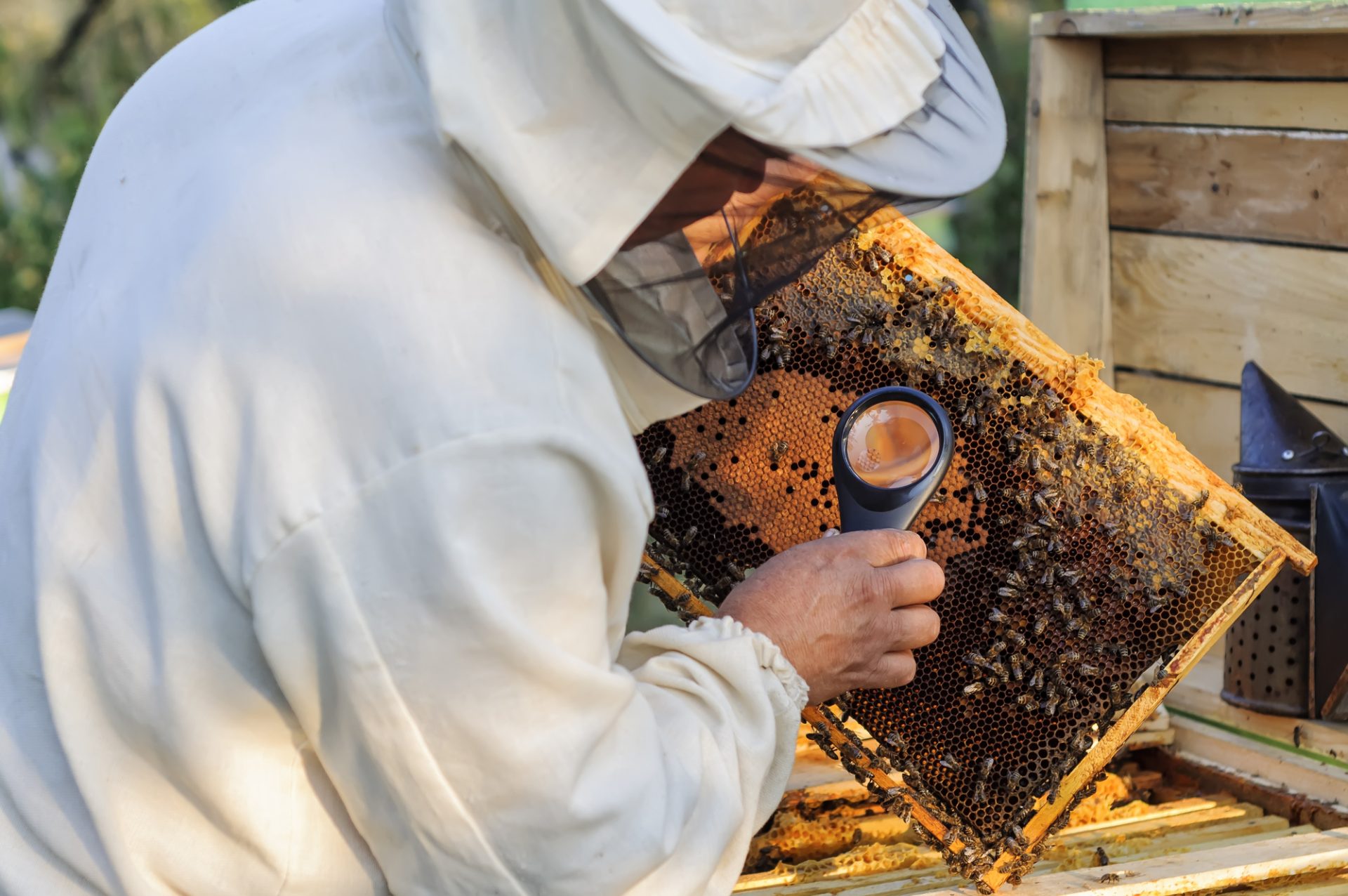
The discovery of the pests and parasites that cripple honeybee colonies led to the advent of many chemical formulations that are used widely. These chemicals might be effective but some have proven to portray some harmful effects to both the bees and humans that consume honeybee products. Therefore, some beekeepers no longer embrace the use of chemicals or medication in treating honeybee colonies. The use of integrated pest and disease management in honeybee colonies has been widely embraced and has proven to be a sustainable way of managing pests and diseases in colonies.
IPM, or integrated pest management in beekeeping refers to the use of a variety of pest control measures that are effective, safe, and economical and guarantees a sustainable solution to pest control. IPM in beekeeping emphasizes the adoption of principles that include acceptable pest levels, minimal use of chemical control, biological control measures, physical control, mechanical control, genetic control, use of preventative cultural practices, and adoption of monitoring and scouting practices. A drift to the use of IPM in disease and pest management in beekeeping has so many benefits such as it is a sustainable solution, the colonies are not exposed to chemicals, it is more economical in the long run, no contamination of hive products, and its long-term efficacy of chemicals guaranteed since they are rarely used.
In a nutshell, honeybees do not require chemicals or medication to thrive. A shift to the adoption of non-chemical measures of pest and disease control in beekeeping has minimized the reliance on chemicals.
Question 14 – Are There Some Poisonous Flowers to Honeybees?
Yes. There are several of these. Some of these plants are regarded as toxic for bees or their effects are regarded as detrimental to honeybees. They include:
- Aesculus californica, Astragalus spp, Convolvulaceae, cyrilliceae, Loganiaceae, Ericaceae, Solacanaceae, and Liliaceae – these plant species and families are toxic to bees.
- Angelica triqueta/apiciaceae – toxic to bees.
- Astragalus miser – toxic to honeybees.
- Tilia spp – is toxic to bees and other insects.
- Ochrama lagopus – affects bees and other insects.
- Astragalus lentiginosus – toxic to bees.
- Rhododendrum spp – toxic to bees.
- Asclepias spp – this is toxic to bees.
- Corynocarpus laevigata – toxic to honeybees.
- Verartrum californicum – toxic to bees
- Sophora microphylia – toxic to honeybees.
- Camellia thea – poisonous to the honeybee larvae.
Some of the plants produce nectar that deters honeybees while others produce unpleasant nectar that poison honey rendering it unideal for human consumption.
Question 15 – Do Honeybees Have Preferred Shrubs and Flowers?
Yes. Honeybees do not just forage on any shrub or flower they come across. They are quite selective, and the beekeeper can help the bees by planting their preferred plants close to the apiary. Honeybees tend to venture outside the hive in search of potential forage. That can explain why you will rarely find a huge number of worker bees in your garden even if the garden could be close to the apiary. Most of the worker bees will fly out to areas where they find abundant nectar such as apple orchards, clover plantations, and many other areas. You can plant crops such as clover, buckwheat, or any other flowering plants close to the hives to help boost food sources for the honeybees.
Honeybees instinctively seek flower variety to guarantee a balanced diet for the colony. Nectar collected from flowers serves as a source of carbohydrates for honeybees whereas pollen is a rich protein and fat source. The pollen baskets found on the legs of worker bees are used for ferrying pollen to the hive. Nectar is collected using the stinger and kept in their mouth as they carry it to the hive.
Some of the honeybees’ preferred flowers and shrubs include bee balm, milkweed, white wild indigo, monarda, cleome, daisies, purple coneflower, black-eyed Susan, joe-pye weed, marsh blazing star, anise hyssop, gaillardia, catmint, yarrow, allium, aster, beardtongue, sage, chives, goldenrod, lantana, lavender, lilac, mint, pentas, poppy, snapdragon, sunflowers, and phlox. Many of the native plants and shrub seeds are available online and in local stores within your locality.
Question 16 – What Is the Best Way to Arrange Hives?
Beehives should be well-positioned to ensure the honeybees are not negatively affected by the elements. The hive opening should face south or southeast. The general rule is that hives should receive sunlight first thing in the morning. Honeybees require the early sun since they are cold-blooded and become active when they are warmed up. An early sun allows the bees to begin collecting nectar and pollen early in the day.
Beehives should also be properly arranged from each other and away from the house. If you are a commercial beekeeper, then you can place 4 hives in a single ballet. If you are a hobbyist, then there is no rule to determine how far apart you can place your hives. That then means you can position the hives in a manner that guarantees your comfort. You might want to keep the hives within proximity so that you do not have to walk or cover a long distance when inspecting or harvesting the hives. As such, a 2-foot distance between hives is recommended when positioning the hives. You should however be cautious when introducing new packages to avoid existing bees from absconding their colony. Keep the new hives far away from the existing ones.
As for hive positioning with respect to homes, good judgment should be exercised. Bees, will without question, fly miles away from the hive when seeking forage. That therefore means the honeybees will still pass through or over a homestead. Nonetheless, it is safer to keep hives away from sidewalks, cloth lines, and decks. The hives should be placed in areas where the bees are not in direct contact with people or pets when they leave the hive.
Question 17 – Can Honeybees Be Eaten?
Yes. In some cultures, honeybees are eaten regularly even though you might not find them in your local restaurant or café. Some cultures eat insects, and it is a normal part of their life. Bees are mainly consumed in its larval form in most cultures and not as adult bees.
The honeybee larvae are usually cooked and in other cases dried to be added to soups or egg dishes. Some of the places you will find honeybee larvae as part of their diet include Thailand, Mexico, and Australia. This delicacy is however not recommended to anyone that has bee allergies. Dead bees should also be avoided since they might have died due to a disease or poisoning.
Question 18 – What is the Ideal Number of Honeybee Colonies to Raise?
There is no exact number recommended for starters. Different people have a desired number outright whereas others are confused and do not know how many hives to start with. It is however prudent to start your beekeeping with at least two hives as the bare minimum. That way, you can share resources between the two hives instead of relying on your neighbors. That means you can even take out a frame of eggs from one of the hives and take it to the other if rendered queenless and is not able to raise its own queen. Additionally, you can boost the bee population in one hive in case the numbers go low. You can move the brood from the stronger colony and use it to strengthen the failing one.
It is also important to comprehend the acreage requirements for honeybee colonies. Honeybees can thrive almost anywhere, ranging from a small backyard, or an expansive piece of land, to a tree and or rock. Bees can do well in an area of a few hundred square feet or on several acres of land. However, not every backyard is ideal for raising bees. A standard hive, with dimensions of 22 by 16 inches requires 5 feet of free space around it. If you are considering getting several beehives, then you can use that as a baseline for determining your required space. The hives should also be arranged in such a way that they are 2-3 feet apart. Additionally, you should consider a few factors before raising bees. These include safety, local laws, water, sunlight, and neighbors.
There is no limit to how big a beehive can become when it has a strong queen and there is sufficient forage. The beekeeper thus limits the number of boxes in a colony to ensure it is manageable. In most cases, 3 to 4 boxes are stacked together and then later split into two. That way, it becomes easier to handle the hive even when full of honey.
Question 19 – Must I be Physically Strong to do Beekeeping?
No. You do not have to use physical effort in most of the work in beekeeping. The majority of the tasks you find in beekeeping can be leveraged using tools and equipment designed to make work easier. The amount of lifting required is also dependent on the size and scope of your business. That therefore means that the beekeeper with many hives has more work, unlike the one that just started keeping bees.
The beauty of beekeeping is the fact that scientists and beekeepers have been working day and night and have devised tools and equipment to even support those with mobility restrictions. This has made it possible for different people to enjoy their work on raising honeybees.
Question 20 – What Are Some of The Benefits of Keeping Bees?
Beekeeping is without question a highly satisfying endeavor. There are much more benefits associated with keeping bees, other than the honey everyone associates bees with. The fact that beekeepers associate with bees and connect with nature through it, makes beekeeping highly gratifying.
Honeybees are beneficial to the environment. They are pollinators that help pollinate plants so that they can grow and reproduce. Honeybees account for about 30% of the global food production through their pollination. They are essential in agriculture and wild plants. Honeybees make it possible for nature to thrive. They gather and spread pollen thus promoting diversity and sustainability in nature.
Honeybees also pollinate huge tracks of plantation fields across the globe, that comprise fruit trees such as apples, vegetables, and almonds. The economic value of honey is also huge, generating approximately $150 million in the US alone annually. Honeybees benefit the economy through increased crop yields, reduced production costs, and competitive prices in food supplies to farmers.
As a hobby, keeping bees is relaxing and helps eliminate stress. The entire experience of being engaged from day one until the day of harvesting honeybee products is fascinating and fulfilling. It allows the beekeepers to forget about their daily problems and be at peace with nature as they interact with the honeybees.
Finally, honeybees make it possible for garden crops and flowers to thrive. The pollination allows the flowers to be full and larger in the flower garden and helps boost vegetable yields. Honeybees guarantee flourishing flower and vegetable gardens.
Conclusion
We hope these frequently asked questions about beekeeping could clear up some things for you. Beekeeping is a fascinating and rewarding endeavor that requires dedication, knowledge, and a genuine passion for these remarkable pollinators. From hive management to bee health, enthusiasts can embark on their beekeeping journey with confidence armed with the knowledge shared in this article. As stewards of the environment, beekeepers play a crucial role in sustaining bee populations and promoting biodiversity. By dispelling uncertainties through comprehensive FAQs, we hope to inspire a growing community of beekeepers committed to safeguarding these essential insects and the delicate ecosystems they support.
 BeeKeepClub Resources and Guides for Beekeepers
BeeKeepClub Resources and Guides for Beekeepers

